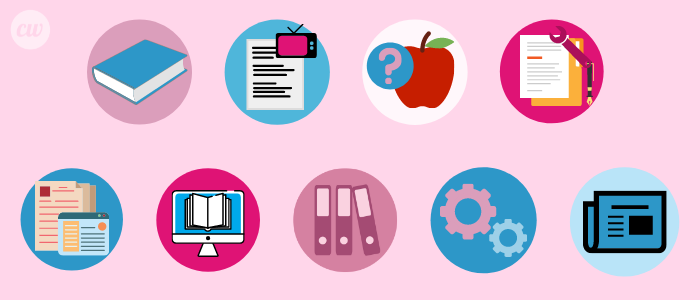
What is the Goal of Technical Writing and Its Importance in Marketing
Well-written technical content makes sense when the intended audience reads it.
That’s the goal of technical writing: making complex content easily digestible to a less technical audience. This sounds simple enough, but there are some unique characteristics that go into creating useful content with a technical focus.
Effectively reaching readers with technical content does present some challenges, but they’re not ones impossible to overcome. Take a moment to learn more about the top goals of technical writing and some of the other finer points of technical content to keep in mind.
What’s the Main Goal of Technical Writing?

Making complex language sound simple is the main goal of technical writing. With this type of writing, you’re assuming the reader has either no knowledge of the topic or a more basic understanding.
For example, everyone knows what a TV is and how to operate the basics. However, actually operating a specific model with its own set of features requires some added knowledge beyond simply knowing how to turn it on and off.
The user intent that typically applies to technical writing is to gain a better personal understanding of a certain topic, product, or concept. It’s also a style of writing that requires research – or, in some cases, personal knowledge and experience – on the part of the writer.
Technical writing needs to be presented in a way that’s clear, concise, and easy to grasp. While some content is meant to be purposely ambiguous at times, this isn’t a characteristic of technical writing. There should be nothing left to the imagination, or any key points left unaddressed.
How Is Technical Writing Used?
Technical writing is often needed for any type of informative content with a specific purpose. It can be used with traditional printed materials or any content accessible online, which could come in the form of PDFs or Word docs to make it easier to present and share.
Technical writing has many benefits and purposes in different fields and industries as well. For example, computer-related industries (especially when it comes to anything involving software) often have many uses for more detailed technical content.
This is also true in the medical and biotechnology world. For instance, there’s often a need for very detailed content about new medications or processes, particularly when it’s time to explain such things to the general public in a more understandable way.
A technical approach to writing can also be used for:
- Employee handbooks.
- User manuals for various products.
- Education-related manuals.
- Part lists and related explanations.
- In-depth web-based articles.
- E-books of a more technical nature.
- Engineering-related content.
- New product introductions.
- Press releases.

What’s the Goal of Technical Writing for Marketing Purposes?
You may not automatically make a connection between technical writing and marketing, but it’s one that becomes clearer when you keep the main goal of technical writing in mind. As mentioned above, it’s making more complex information understandable.
This is a goal that makes perfect sense for both traditional and online marketing since there’s always an interest in informative content that’s easy to digest. In fact, this type of content often inspires more engagement than shorter content primarily meant to drive home a single message.
Of course, other types of content have a place, too. But long-form content, according to SEMrush, actually performs better in some noticeable ways. For instance, longer-form content, which can certainly include technical content, typically earns more backlinks than short-form content.
Because of the potential for well-prepared and strategically presented technical content to generate interest, it has many useful purposes when it comes to marketing. Remember, marketing, in a broad sense, is just a way of generating interest and attention among a specific target audience.
This is a more generalized goal that can apply to any type of content, including content of a more technical nature.
Marketing-related goals associated with technical writing could also include:
- Promoting a new product or service.
- Providing new or more detailed information to a specific target audience.
- Supplementing related marketing/promotional content.
- Generating interest in a particular business or brand by clearly spelling out what makes certain services or products unique.
- Gaining a foothold as a leader or innovator in a specific niche or industry.
- Raising awareness.
- Reaching out to a broader audience.
- Establishing credibility and authority.
How Does Technical Writing Fit In with SEO?
The potential to generate more backlinks is just one of the many SEO-related perks that go along with online technical content. Many searchers today are on the hunt for more details beyond the basic facts. The flip side is that there’s also a tendency to shy away from any content that is too complicated.
However, if the right balance is established with technical writing, the resulting content can be appealing enough to inspire sharing, commenting, and other beneficial forms of engagement that help with online visibility.
For SEO-purposes, there are many ways to generate interest with technical content such as:
• Making it an easily accessible email attachment
• Linking to technical content in related blog or social media content
• Enhancing website content with links to technical content
• Breaking down technical content into shorter forms that can be repurposed elsewhere online
This type of content also plays an important role in building trust with the target audience. A searcher is more likely to find a business or brand more reputable and trustworthy if they regularly share more detailed information or insights in a relatable and understandable way.
Search engines like Google look at things like the trustworthiness of content for ranking purposes. Plus, if well-written technical content is highly relevant and informative for the target audience, this will also be noticed by Google.
The SEO benefits associated with properly optimized technical content could include:
- More backlink opportunities.
- Improved brand reputation and recognition.
- Longer page visits in places where technical content is accessible.
- More sharing and reposting – to further enhance online visibility and authority.

Technical Writing Examples
Technical writing comes in many forms, although some are more common than others. With technical writing examples, let’s focus on ones that tend to be used most often for detail-oriented writing with a technical twist and tone.
User Manuals
User manuals come with practically anything you purchase, from television sets, cars, and laptops to toasters, vacuums, and portable air conditioners. These little booklets (often stuffed into boxes and accessible online) are a common example of technical writing.
User manuals are written as if the person reading them is entirely unfamiliar with the product they just purchased in terms of the finer points of operating it. If you’re writing a user manual, you’ll need to coordinate your efforts with engineers, developers, and anyone else with a solid understanding of the product.
While the instructions need to be understandable, they also have to be accurate. Any omissions or unintentional oversights could leave a business or manufacturer open to possible legal action if an injury occurs, so there’s also a liability concern (in this case).
Well-prepared user manuals have a more subtle marketing advantage, but they can still be useful for this purpose. For instance, if a business develops a reputation for producing user manuals for its products that are actually understandable, potential customers may consider this an added incentive to consider a purchase.

Case Studies and White Papers
Case studies and white papers have a similar purpose – to demonstrate clear expertise in certain subjects to the reader. For this reason, the resulting content is naturally more technical and detailed in nature.
Written with a passive voice, case studies typically use real-world examples to prove or disprove certain points. White papers use an active voice to look at challenges or problems specific to a certain industry, business, or field.
In order to do this type of technical writing, it helps to be involved with the industry or field being discussed. While this isn’t an absolute requirement, it can be extremely difficult for someone to come across as a credible “expert” when just doing basic research. With this kind of writing, you want to retain the trust of the reader and maintain authority.
This is an example of the kind of technical writing that can help build trust and authority. These are two essential traits that can go along well with any marketing-related efforts, especially online-based ones.
Press Releases
A press release is a type of technical writing because it provides more detailed information about a specific announcement. The target audience is usually the general public or, by extension, the press – hence the name.
You don’t necessarily need to work for a particular business to issue a press release on their behalf. However, you still need to follow the general format for press releases – or any modifications requested by the company issuing the press release. The conclusion is usually a brief summary of what the business does or any relevant facts and contact info.
The main goal of a press release is to attract attention with something newsworthy, either from traditional broadcast outlets or online sources. It’s usually about a specific announcement involving the company or agency issuing the release.
In some situations, a press release may be issued to do damage control in case of some type of brand or company crisis. For marketing purposes, press releases are essentially free publicity.
Company/Corporate Documents
Company documents are a more encompassing example of technical writing in that it includes any internal documents of a more detailed and informative nature specific to a company or business.
Company documents with a technical spin could include:
- Employee handbooks.
- New employee orientation manuals.
- Annual reports.
- Business plans.
An employee manual is intended primarily for new hires, but it can also be beneficial for existing employees.
The related content typically addresses such things as any applicable dress code, expectations while on the job, policies for requesting time off, basic employee benefits, disciplinary procedures, etc.
New employee orientation materials are similar but only specific to new hires. In this instance, there are usually added details about training requirements, salaries, and anything that could specifically apply to someone just starting a job with a new employer. Well-prepared employee materials play a key role in any marketing-related activities involving the recruitment of qualified new hires.
An annual report can fit in this category since it’s specific to a company’s performance over the past year. In this instance, a more intimate knowledge of a company’s internal data, especially anything more financial in nature, is needed to present an accurate reflection of its overall performance for a specific period of time. These reports are important for marketing purposes since a solid financial performance reflects well on any business.

A business plan is a type of company document of a technical nature that’s usually prepared by a new business or one that’s expanding or making other significant changes. If we’re talking about the development and launch of a new business, technical writing of this nature typically includes details about:
- Key employees.
- Basic services and/or products.
- Competitors and the intended market.
- Profit and loss projections.
- Financial planning and related details.
This type of information gives the general public some important details about what a particular business is all about on a more personalized level. This can be especially beneficial for startups or new companies looking to establish a clear purpose or identity which also serves as a blueprint for related marketing efforts.
Becoming a Technical Writer
If you’re interested in becoming a technical writer, utilize your strengths. If you have a particular area of expertise, whether it’s about a certain industry or a specific product or concept, use those personal insights to your advantage.
Also, work with clients that fit your style and preferences. If you prefer more flexibility with the clients you work with and the topics covered, for instance, you might prefer to primarily specialize in press releases or business plans for startups so you can work with a greater variety of clients.
Quality Content Is Just as Important
Finally, don’t forget about high-quality content with any of your technical publications, manuals, posts, or articles. In addition to what was already discussed, a goal for technical writing should be to continuously present fresh, engaging, up-to-date, and relevant content that reflects well on your business or brand.
Ken is a freelance writer currently living in the Pittsburgh area of Pennsylvania. Born in California, his fondness for writing dates back to elementary school writing contests and led to positions on both high school and college newspapers. He earned a degree in Journalism and Communications from Point Park University and did work in data entry after college before transitioning to a full-time career as a freelance writer. While his areas of expertise are marketing and health-related content, Ken is a versatile writer and enjoys exploring and researching a variety of topics. When not busy knocking out articles, he likes to spend time with friends, go for walks, and discover new and exciting things about the world around him.




